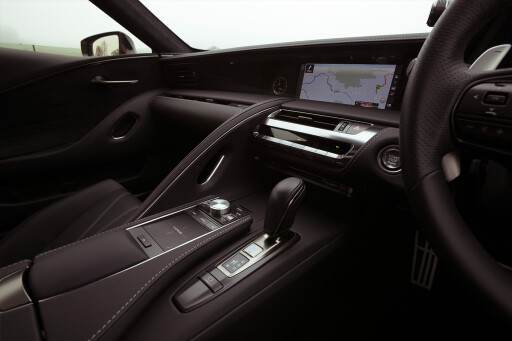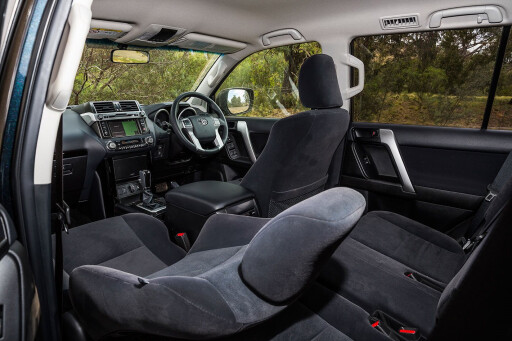
MODERN cars are getting safer, more efficient, and smarter at a rapid rate. They're making our lives easier, integrating our smartphones, helping to reduce fatigue, and in some cases, are even driving for us.
But, the downside to this increased use of technology is that sometimes it can become ruddy annoying. Here are our 10 most annoying features of modern cars, with a few hard-engineering complaints - like tiny cup holders! - thrown in for good measure. If we've missed any, be sure to tell us in the comments.
Stop-start
By now, we all understand the fuel-saving advantages of stop-start, but there are times when a shut-down engine might not be the best idea when stationary, such as crossing oncoming traffic where the fastest engine response is the safest.
Then there are those drivers still getting used to the technology and panic like the fuel pump has died every time idle-stop tries to save a few drops of petrol.
In these circumstances, opt-in idle-stop might satisfy a few more owners but, the truth is that manufacturers can only quote the best fuel economy figure if idle-stop is an opt-out.

The button to turn the feature off can also be the subject of frustration and, in the case of BMW, its idle-stop cancel switch is positioned right next to the engine start/stop button. The switch is hard to see from the driver’s point of view and the engine off button can be pressed by mistake.
Worse still, it could be hidden in a sub-menu, which brings us nicely to our next gripe.
Basic functions buried in touchscreen systems
There are a number of comfort and driving functions that are best placed for easy and fast access – usually through a conventional push button, but some car makers have hidden them away in the name of de-cluttered dash boards and sleek interior design. The Toyota C-HR’s Sport mode and the Lexus LC’s air-conditioning switches are two such offenders.
In the case of the latter, it can take so long to navigate the various screens and sub-menus that a different season has arrived and you don’t need the air-conditioning after all. A simple switch for heated seats, AC, and driving modes is best.
Locked-out features when driving
Ever been stuck in traffic and wanted to dial in an alternative destination into the nav but the controls lock out every time you creep forward? It’s an occurrence that has annoyed us on more than one occasion, and one safety feature that a number of manufacturers (We’re looking at you, Kia, Lexus, and Subaru!) build in to prevent driver distraction.
We certainly don’t condone doing anything that prevents the driver from paying full attention to the road, but this frustrating design trait fails to acknowledge that there is often a perfectly capable passenger that can control the nav and many other sytems such as Bluetooth pairing for example.

Undersized cup holders
We certainly don’t want to see a situation similar to the cup holder fiasco in the United States where cars don’t sell unless all six passengers can accommodate a bucket of soft drink each, but some European brands have gone to the opposite extreme.
A drink holder that resembles an on-board Jacuzzi would be a little overkill, but something that at least accommodates a can larger than a fun-size is not too much to ask is it?
Superfluous messages
There is no doubt that a majority of warning messages provided by sophisticated vehicle condition monitoring systems are helpful, such as some excellent driver fatigue technology and ice warnings for example, but we are not so convinced when it comes to this ‘Eco Tip’ offered by a Golf 7.0 - ‘Do not depress the accelerator when stationary’.
We can’t deny that this advice would certainly save fuel, but it seems to ignore the fact that a less constructive by-product of which is not actually going anywhere.

Excessively chatty driver assistance systems
Just like the boy that cried wolf, any warning light or sound that activates too frequently or unnecessarily starts to lose its efficacy. Blind spot monitoring systems that flash, beep, and vibrate when the vehicle is stationary or turning in the same formation as other vehicles (such as when entering a multi-lane roundabout) can desensitise drivers to legitimate warnings.
A simple solution? Deactivate the warning when stationary.
Anything that turns the AC on other than a human digit
Car makers spend millions of dollars developing technology that can save precious drops of fuel, including the aforementioned idle-stop, so we are mystified at cars that flick on the air-conditioning (a heavy fuel consumer) at almost any opportunity.
All too often we have been cruising along wondering why our skin has dried out to a withered old hide and our dehydrated contact lenses are permanently attached to our eyeballs, only to realise the AC has turned itself on again.
The main offenders switch on AC when the screen-clear climate option is selected, but we would prefer to be the master of our own fate and choose whether the screen is cleared by the AC or simply by warm air that does not impact fuel consumption.
Door locking beep
What was wrong with a subtle indicator flash when remote locking? Some Holdens leave no doubt that the doors have locked with an intrusive honk from the horn that makes everyone in the car park look around to see who is trying to get their attention.
If you insist on an audible notification, a different sound might cause less confusion.
Open door chime
The last thing you want in the pre-dawn calm as the sun rises romantically over Big Red on the edge of the Simpson Desert is that piercing “ding, ding, ding” as you open the door to grab the camera, as is the case with the Toyota Prado and many others.
We can understand the purpose of a warning for when a door is incorrectly latched when moving, but what is the value when it’s stationary or even parked? A system that is deactivated as soon as the park brake is applied might preserve those serene mornings a little longer.

Seatbelt warnings that continue to sound after park or reverse is selected
It’s a little known fact that the only time you are legally allowed to move a vehicle without a seatbelt fastened is in reverse. The idea is that it is easier to look behind and ensure the way is clear if you are unrestrained, but it would be great if a majority of car brands understood this as well.
Seatbelt warnings that sound when the car is in reverse and, in the case of some offenders, in park, add no safety advantage and are, like all of our favourite love-to-hate features, downright annoying.



COMMENTS